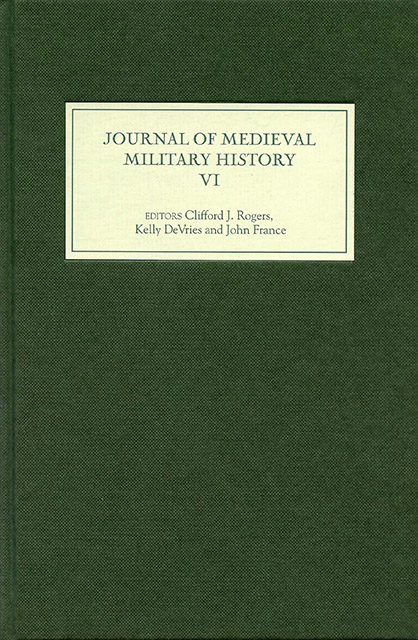Book contents
- Frontmatter
- Contents
- 1 Cultural Representation and the Practice of War in the Middle Ages
- 2 The Brevium Exempla as a Source for Carolingian Warhorses
- 3 Infantry and Cavalry in Lombardy (11th–12th Centuries)
- 4 Unintended Consumption: The Interruption of the Fourth Crusade at Venice and Its Consequences
- 5 Light Cavalry, Heavy Cavalry, Horse Archers, Oh My! What Abstract Definitions Don't Tell Us About 1205 Adrianople
- 6 War Financing in the Late-Medieval Crown of Aragon
- 7 National Reconciliation in France at the end of the Hundred Years War
2 - The Brevium Exempla as a Source for Carolingian Warhorses
Published online by Cambridge University Press: 10 March 2023
- Frontmatter
- Contents
- 1 Cultural Representation and the Practice of War in the Middle Ages
- 2 The Brevium Exempla as a Source for Carolingian Warhorses
- 3 Infantry and Cavalry in Lombardy (11th–12th Centuries)
- 4 Unintended Consumption: The Interruption of the Fourth Crusade at Venice and Its Consequences
- 5 Light Cavalry, Heavy Cavalry, Horse Archers, Oh My! What Abstract Definitions Don't Tell Us About 1205 Adrianople
- 6 War Financing in the Late-Medieval Crown of Aragon
- 7 National Reconciliation in France at the end of the Hundred Years War
Summary
During the Avar campaign in 791, an equine epidemic is reported to have destroyed ninety per cent of the horses in Charlemagne's army, comprising Charlemagne's own horses as well as those of his vassals, both cavalry mounts and pack animals. Fortunately, the breeding stock of the Carolingian army survived the epidemic because of their location far removed from Pannonia, the site of the epidemic. Even to begin the process of replenishing the lost animals entailed a lengthy period of eleven months, the gestation time for horses. It would take even longer – some three years – to raise and train newborn colts to develop them into warhorses.
Two collections of Carolingian estate inventories, the Brevium Exempla ad describendas res ecclesiasticas et fiscales (BE), dated to c. 801, and the better known Capitulare de villis (CV), shed valuable light upon the steps taken and the difficulties of royal stewards tasked with restoring Charlemagne's supply of warhorses. Although the CV has been used by previous scholars, most notably R. H. C. Davis, as evidence for Carolingian approaches to horse breeding, it is not until one reads the CV together with the BE that one can fully understand Carolingian horse breeding management. A careful reading of the CV in conjunction with the BE inventories that survive from Charlemagne's royal estates will show that horse breeding was done as scientifically as had been the case in the Later Roman Empire and as would be in the High Middle Ages, and may reflect a continuity of some Roman practices as evidenced by the presence of manuscripts of the Roman agronomists in Carolingian libraries.
The BE contains inventories of ecclesiastical and royal estates in three sections. The first segment describes possessions of an island on Staffelsee in Bavaria in the see of Augsburg; the next section consists of precarial grants from the possessions of the abbey of Wissembourg in Alsace; the third part lists the inventories of five crown estates (fisci), of which one was a vineyard, while the remaining four include information on horses.
The BE and the (CV) were bound together in the same manuscript. Although the BE immediately precedes the CV in the manuscript, the BE actually was compiled afterwards as a supplement to the CV, dated c. 800. Several considerations suggested that the CV and part three of the BE were interrelated.
- Type
- Chapter
- Information
- Journal of Medieval Military HistoryVolume VI, pp. 32 - 57Publisher: Boydell & BrewerPrint publication year: 2008
- 1
- Cited by

